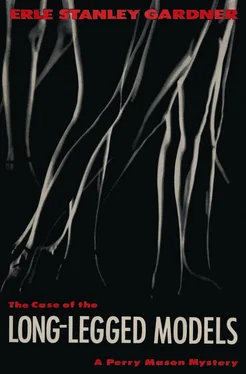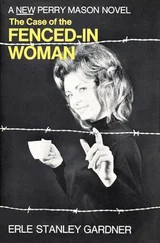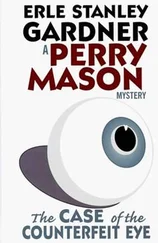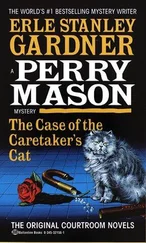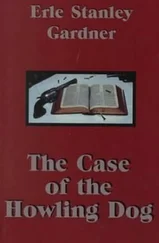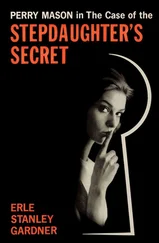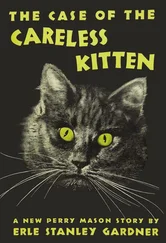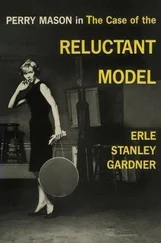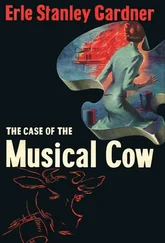Again there was no cross-examination.
Judge Decker glanced sharply at Mason, started to say something, then changed his mind.
The autopsy surgeon testified to the nature of the wound and the course of the bullet. The wound, he explained, was what was known as a contact wound. He stated that the one shot had been almost instantly fatal, although there had been a brief period of unconsciousness during which there had been a very large internal and external hemorrhage. He identified the fatal bullet which had been recovered from the body of the decedent.
He fixed the time of death as being probably between seven o’clock in the evening of the seventh of October and midnight. He had performed an autopsy at noon of the eighth and he fixed the probable time of death as between twelve and seventeen hours prior to the autopsy although he was inclined to consider fifteen to sixteen hours prior to the autopsy as being the most logical time.
Again Mason failed to ask any questions on cross-examination.
At that point, Guy Hendrie recalled Sgt. Holcomb to the witness stand.
“I am showing you herewith a certain Colt revolver of .38 caliber, and I will ask you if you have seen that gun before?”
“Yes, sir. I have.”
“When did you first see it?”
“On the eighth of October, around eleven forty-five o’clock of that day.”
“Where did you first see it?”
“In the apartment of Stephanie Falkner, the defendant in this case.”
“Where was it in that apartment?”
“Lying upon a table near the center of the room.”
“Did you take or did you cause a photograph to be taken of the apartment?”
“I did, yes, sir.”
“And does that photograph show where the gun was found?”
“Yes, sir.”
“Do you have a print of that photograph with you?”
“Yes, sir.”
Sgt. Holcomb produced a photograph.
“We ask that it be received in evidence,” Hendrie said.
“Just a moment,” Mason said, “I would like to ask a question of the witness in connection with this photograph.”
The jurors, impressed by the fact that this was the first attempt Mason had made to cross-examine a witness, turned to regard him with considerable interest.
“This photograph shows a weapon on the table, Sergeant,” Mason said.
“Yes, sir.”
“Is that the same weapon which you have identified?”
“Yes, sir.”
“Is that weapon in the same position in which you found it?”
“Yes, sir.”
“Then the photograph must have been taken before the weapon was moved?”
Sgt. Holcomb hesitated a moment, crossed his legs. “Well, the weapon was picked up, examined, and then returned to the same place where it had been found.”
“Who examined it?”
“I did.”
“Anyone else?”
“Lt. Tragg of Homicide was with me at the time.”
“And of what did the examination consist?”
“We broke open the cylinder, we saw that there was an empty cartridge directly underneath the firing pin, we smelled the barrel.”
“Did you dust it for fingerprints?”
“Yes.”
“And then what?”
“Then the weapon was returned to the exact position in which it had been found so that it could be photographed.”
“And then this photograph was taken?”
“Yes, sir. That is right.”
“Now if you know,” Mason asked, “was any attempt made to connect the fatal bullet in this case with this weapon?”
“Just a moment,” Hamilton Burger said. “That is going to be proven by my next witness. I will have the ballistic expert on the stand, and he can be cross-examined.”
“That’s quite all right,” Mason said. “All I am asking this witness is whether such an examination was made?”
“Yes, sir.”
“When?” Mason asked.
“Shortly after the weapon was recovered. I don’t know exactly the time, but it was within a few hours.”
“What do you mean by a few hours?” Mason asked.
“Just a short time, a very brief interval.”
“As much as twenty-four hours?” Mason asked.
The witness hesitated.
“As much as forty-eight hours?” Mason asked.
“No, it wasn’t forty-eight hours.”
“It could have been twenty-four hours?”
“It could have been. I think it was much less.”
“Who put the weapon back on the table in the exact place where it was found?”
“I did.”
“How did you know where that exact place was?”
“I remembered it.”
“Did you mark it in any way?”
“No.”
“Now when you entered the room,” Mason asked, “and found this weapon, was the muzzle pointing toward the door or was it pointing away from the door?”
“It was on the table as shown in that photograph.”
Mason, holding the photograph so the witness couldn’t see it, repeated, “Was the muzzle pointed toward the door or away from the door?”
“At this moment, I can’t remember. I knew at the time. The photograph will show its exact position. I replaced the gun within five minutes of the time I picked it up and while its position was fresh in my mind.”
“Thank you,” Mason said, “these are all the questions I have in regard to the photograph, if the Court please.”
Hendrie said, “I now wish to offer the photograph in evidence.”
“No objection,” Mason said.
Hendrie turned to the witness. “Did the defendant make any statement to you with reference to the gun?”
“Yes, I asked her about the gun, and she said Mr. Homer Garvin had given it to her.”
“Did you have any further conversation with her?”
“Yes, I asked her about the discharged shell in the gun and she said she knew nothing about it, that the weapon was in the same condition as when she had received it.”
“We ask that the weapon be marked for identification.”
“So ordered,” the Court ruled. “It will be People’s Exhibit Number 30, and the photograph is in evidence as People’s Exhibit Number 29.”
“You may inquire,” Hendrie said.
“Did she say whether or not she had received the gun from Homer Garvin, Sr., or Homer Garvin, Jr.?”
“Just that she had received it from Homer Garvin. That was all she said.”
“Did she say when she had received it?”
“No, sir. She didn’t.”
Hamilton Burger said, “If the Court please, we expect to connect up the time element. However, in that connection, I will ask Sgt. Holcomb one question. What time did you arrive at the defendant’s apartment, Sergeant?”
“It was almost exactly eleven forty-five.”
“No further questions,” Mason said.
“Call Alexander Redfield,” Hendrie said.
Redfield, the ballistics expert, who had been cross-examined by Mason in several other cases and who had learned to be very wary indeed of Mason’s ingenuity on cross-examination, took the oath and settled himself cautiously on the witness stand.
From Hendrie’s manner, it was apparent that there was a certain feeling of exasperation on the part of the prosecuting attorney toward Redfield, that Redfield, on the other hand, knowing Mason’s ability as a cross-examiner and his knowledge of the subject of ballistics, was determined to give only such evidence as was completely unassailable.
“I show you People’s Exhibit Number 30, the weapon which has just been received in evidence. Are you familiar with that weapon?”
Redfield took the exhibit in his hands, studied it carefully, checked the serial number, then said, “Yes, I am familiar with it.”
“I show you a bullet which has previously been introduced in evidence as People’s Exhibit Number 14, the fatal bullet. Are you familiar with that bullet?”
The witness took a magnifying glass from his pocket, carefully inspected the base of the bullet, then said, “Yes, sir. I am familiar with that bullet. It has my secret mark on it.”
Читать дальше
